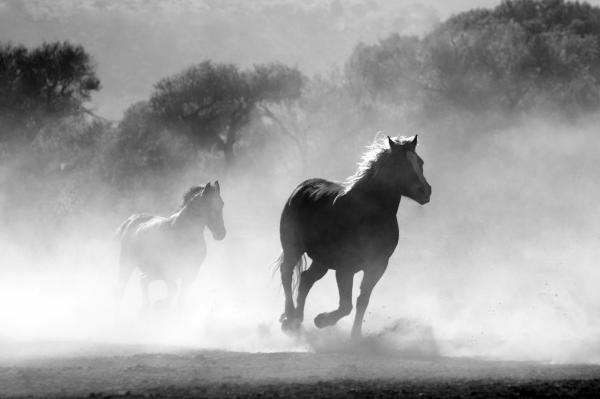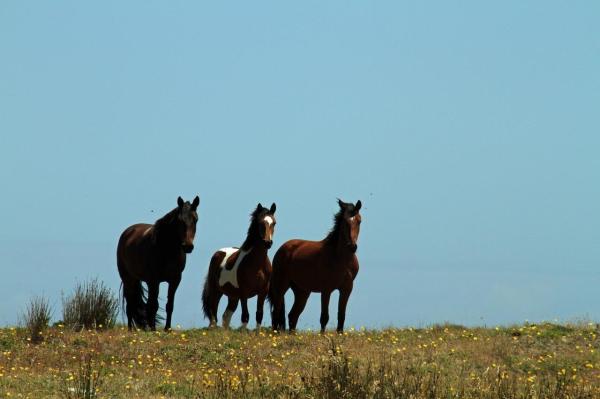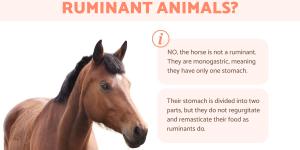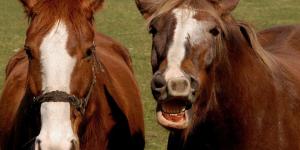What are Wild Horses? Horse Subspecies Around the World



See files for Horses
Wild horses, majestic and fiery, evoke a feeling of freedom and pride and bring images of wild herds galloping across infinite landscapes with their manes billowing in the wind to mind.
However, nowadays wild horses are becoming rarer. Humans have forced them to arid areas where the lack of food and water and the weather and landscape conditions make survival very difficult for them.
All horses, domestic and wild alike, belong to the same species: Equus ferus. Horses can be classified into subspecies and into three different groups: feral horses, semi-feral horses and true wild horses. In this AnimalWised article, we will explain what are wild horses and what are the different horse subspecies around the world.
What are feral horses?
Feral horses are free-roaming horses that live in the wild and belong a country or a state. However, they are not wild horses as they are of domesticated ancestry: they belong to the same subspecies as the domesticated horse, Equus ferus caballus. These domestic horses managed to escape or were released intentionally and were able to survive and reproduce.
There are very famous types of feral horses around the world, including the following:
- Mustangs are found in the western United States of America and are used in rodeos. These emblematic horses descended from the horses used by the Spanish conquistadors in the 16th Century. They look similar to Arabian and Andalusian (Pure Spanish) horses.
Some escaped and returned to life in the wild, reproduced and populated the continent. By the 19th Century there were 2 million of them! Mustang horses began to be seen as a threat and farmers started accusing these horses of eating their grass. As a result of this, mustangs began to be captured or killed. By the 1960s, the population of mustangs in the Western states had declined drastically.
Worried that mustangs would become extinct, the US Congress voted in 1971 for a law to protect them. Today, the population of mustangs in the US is estimated to be between 40,000 and 80,000.
- The Namib Desert Horse probably descends from horses brought over by the Germans in the late 19th Century when they colonized the Namib Desert in Namibia, as there are no native types of horse in southern Africa.
During World War I these German horses were used in the conflict, and many of them escaped or were abandoned or lost by their owners. It is believed that these now feral horses survived thanks to an oasis in the desert.
The climate conditions, which included extreme heat, drought and sandstorms and the scarcity of food and water makes life very hard for Namib Desert Horses. As a result, only less than 300 Namib Desert Horses are left, with almost half the foals dying during their first year of life.
- The Brumby is a type of feral horse from Australia that descends from the horses that were brought over by Europeans in the 19th Century century. However, at the same time, machines started to replace horseswherever possible. The horses were either left in meadows or were taken to the slaughterhouse. Many of those who were abandoned and returned to the wild and became feral.
The horses quickly adapted to the warm climate of northern Australia and began to reproduce and spread. Over time, as a result of food scarcity and inbreeding, these sorrel or black horses shrank and became small horses measuring a maximum of about 1.5 m (4 ft 11) to the withers.
A few years ago there were so many of these horses in Australia that farmers and wildlife services worried about habitat degradation and competition for resources, as well as for the safety of their crops. The Australian National Parks and Wildlife Service began hunting them from helicopters, killing entire herds of Brumbies with carbines. The Australian government believes that the Brumbies are not endangered and has not created any law to protect them.

What are semi-feral horses?
Semi-feral horses live freely in herds in large areas, as feral horses do, but they actually belong to a horse breeder.
Among the types of semi-feral horses around the world we can find the Pottok or Pottoka from the Basque Country, a pony breed that reaches around 1.2 m (3 ft 11) at the withers.
The ancient Camargue horse is also a semi-feral horse breed. This beautiful gray horse lives in southern France, in the Camargue region and the delta of the Rhône river, and it is believed that they arrived in this area before the Romans. They live freely, but they actually belong to farmers who use them mainly for bull festivals.

What are
There is only true wild horse today, the famous Przewalski's or Dzungarian horse. It is also a subspecies of the horse, and its scientific name is Equus ferus przewalskii. This type of horse has never been domesticated by humans, so it is not feral but truly wild. The Przewalski's horse can be recognized because it's short and sturdy, at 1.4 m (4 ft 7) tall at the most, and it is a beautiful pale dun in color.
The Przewalski's horse lived for many years in the steppes of Central Asia, almost unknown to Europeans until 1878, when the Russian colonel Nikolai Przewalski set out to find them after hearing rumors of their existence. He managed to describe them and brought back some of a wild horse's coat.
However, the curiosity that led to the discovery of the Przewalski's horse almost caused their demise: herds of Przewalski's horses were moved and put into captivity, hunted or destroyed for agricultural reasons. The Przewalski's horse actually became extinct in the wild in the 1960s, but has since been reintroduced to its native habitat in Mongolia. However, it is still an endangered subspecies and very few specimens remain today.
Another type of true wild horse was the tarpan or Eurasian wild horse, a subspecies known as Equus ferus ferus. It was native to the steppes of West Asia and Central Europe, but it became extinct: the last tarpan horse, who was kept in captivity, died in the early 20th Century. It is believed that tarpans became extinct due to competition with human farmers and crossbreeding with domesticated horses.
The tarpan was relatively short, at 1.4 m (4 ft 7) tall at the withers, and a pale bay or tan gray (grullo) in color. There are claims that the Konik breed descends from the tarpan, but there is no genetic proof and it shows no traits of a true wild horse.

Now that you know what are wild horses, the differences between feral and semi-feral and the different horse subspecies around the world, don't miss the following articles:
- How are horses classified into types?
- The best horses for show-jumping
- What is the best diet for horses?

If you want to read similar articles to What are Wild Horses? Horse Subspecies Around the World, we recommend you visit our Facts about the animal kingdom category.









